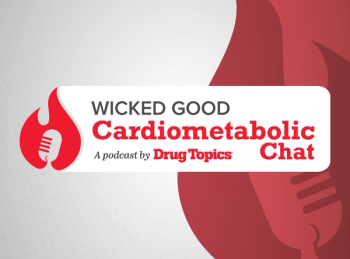
Faster Drug Approvals Mean Healthier Patients (Maybe)
How the FDA is prioritizing drugs that offer the biggest health gains.
Between the promise by President Trump and FDA Commissioner Scott Gottlieb to begin approving drugs more quickly and the 2016 passage of the 21st Century Cures Act-intended to speed along many approvals-some wonder about the negative impact on drug safety and efficacy of rapid approvals. Now, research indicates that expediting reviews for certain drugs is beneficial.
The breakthrough therapy program-for drugs that target serious conditions and show a marked improvement over existing drugs in preliminary evidence-was not implemented until 2012. Therefore, the expedited drug approvals evaluated in the study took three forms: priority review, for drugs that target serious conditions and that would offer significant improvement over existing options; accelerated approval, for drugs that could provide clinical benefit for unmet medical needs; and fast-track designation, for drugs that could meet an unmet medical need and that allows the drug manufacturer to have more interaction with the FDA to expedite the process. Drugs can be assigned one or more designations.
Related article:
To determine the health gains of patients after taking the drug, the researchers used a measurement known as Quality-Adjusted Life Years (QALYs). One QALY is equivalent to one year with perfect health, and a year with some impairment is measured somewhere between zero and one. The authors give this example: “four years lived in perfect health equal four QALYs. Eight years experienced with a quality of life of 0.5 per year is also equal to four QALYs.”
The team examined drugs based on drug-indication pairs, meaning that if one drug had multiple indications, each indication was studied separately. They included only drugs with at least one QALY gain estimate, giving them a total of 118 drugs, or about 30% of the novel drugs approved by the FDA in that period. Altogether, they analyzed 135 drug-indication pairs: 68 in the priority review program, 31 in the fast track program, and 17 in the accelerated approval program. Thirty drugs were in multiple programs, and 59 were in no programs.
Overall, drugs that had at least expedited designation offered health gains of 0.182 QALYs compared to standard designated drugs with gains of 0.003 QALYs. Multiple designations resulted in greater QALY gains than a single designation-0.307 compared to 0.126. Compared to drugs not in the same designation, drugs in priority review (0.175 versus 0.007 QALYs), accelerated approvals (0.370 versus 0.031 QALYs), and fast track (0.254 versus 0.014 QALYs) had greater gains.
James Chambers, PhD, MPHarm, MSc, Assistant Professor of Medicine at
Up next: What this means for the FDA's future
Howevever, Chambers did say, “We were somewhat surprised to the extent that the FDA appears to have successfully prioritized drugs with the largest health benefits for expedited review.” Because drugs with expedited approval offer significantly greater health gains than normal, it indicates that the FDA is able to at least somewhat accurately predict which drugs are most needed at any given time. “Our analysis,” the study said, “provides policy makers with new information about the performance of existing expedited programs and an empirical context for considering the appropriateness of introducing additional programs.”
However, the study carries several caveats. The team examined only a relatively small number of all the novel drugs approved in the time frame. Also, drugs with shorter review times are more likely to be taken off the market for safety reasons or have additional warnings added to the label. Although drugs in the accelerated approval program are required to undergo mandated postapproval trials, the FDA often has trouble ensuring that they happen.
Related article:
The authors also expressed concern that expedited approvals could become the norm. In 2016, 16 of 22 novel drugs were in at least one expedited program. Chambers said that, because drugs in the United States are already approved more quickly than in other countries and because most drugs are included in expedited review, “I think that policy makers need to be very sure that the potential benefits of expanding the expedited review processes to include additional drugs outweigh the potential downsides.” He added: “There is a risk that expanding the expedited review programs makes expedited review the standard for FDA approval.”
While the authors advocate for “greater scrutiny” of the expedited review programs, they also recognize the value that expedited treatments can bring. Chambers said that even nonbreakthrough treatments “can offer valuable treatment options for patients for whom alternative treatments have been unsuccessful, and by adding competition to the market they can help drive down drug prices.” The study concludes, “Expedited review programs offer the FDA greater discretion for hastening the delivery of highly promising and much-needed treatments to patients and for providing incentives for pharmaceutical innovation.”
“However, the key will be to maintain an appropriate balance of benefits and risks to improve population health,” the study concluded.
Newsletter
Pharmacy practice is always changing. Stay ahead of the curve with the Drug Topics newsletter and get the latest drug information, industry trends, and patient care tips.











































































































































































































